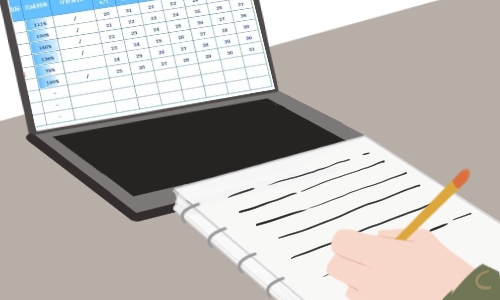精选文章 -->
精选冀教版九年级英语教案 精选一年级上册英语教案 精选高三英语复习教案15篇 精选大班幼儿英语教案 精选八年级英语教案人教版冀教版九年级英语教案通用5篇
教案是教师对教学目标、教学内容、教学方法和评价方式进行系统规划的产物。下面是小编为大家整理的冀教版九年级英语教案,如果大家喜欢可以分享给身边的朋友。

冀教版九年级英语教案 (精选篇1)
学习目标
1.通过交流和表达,进一步掌握学习英语的技巧与方法。
2.掌握下列知识点:
■重点词汇:f1ashcard,vocabulary,pronunciation,a1oud
■重点短语:①study for②make flashcard③make vocabulary lists④ask the teacher for help
⑤read aloud ⑥study with a group
■重点句型:①How do you study for a test? ②What abou tlistening to tapes?
■语法:by+μing的用法
预习导学
预习单词,完成下列各词。
1.抽认卡
2.词汇
3.Aloud(近义词)
4.发音(名词)
5.ever(反义词)
6.1isten(现在分词)
7.study(过去分词)
8.________________ (如何)do you study for a test?
合作研讨
一、重点单词与短语
1.pronunciation n.发音;发音法,其动词形式pronounce
【跟踪训练】
(1)她认识很多法语单词,但发音不正确。
She knows a lot of French;words,but them incorrectl.
2.Aloud adv.出声地;大声地
例如:read aloud大声朗读
【辨析】aloud/loud/loudly
aloud出声地;大声地。常与read,cail等动词连用,loud高声地;大声地;喧闹地。常用于talk,speak等动词之后;
loudly高声地;喧闹地。一般可以和10ud互换,但含有“吵闹”的意思。
【跟踪训练】
(2)老师要求我大声朗读课文。
The teacher asked me to the text .
(3)请大声点说,以便我能听清楚。
Please________________ ________________so that I can hear you clearly.
(4)不要这么大声说,婴儿在睡觉。
Don't________________so________________.The baby is sleeping.
3.asksb.for…向某人请求
例如:ask the teacher for help向老师请求帮助
(拓展)ask sb.to do sth.请求某人干某事
ask sb.not to do sth.请求某人不要干某事
【跟踪训练】
(5)他们向我求助,
They________________me________________help.
4.too... to...太……而不能……
【拓展】too...to...可以与so...that(如此……以至于……)或
Enough to do...(足够……以至于……)转换。
【跟踪训练】
(6)The problem is so difficult that I can’t work it out。
(同义句转换)
The problem is ________________difficult________________ ________________ work out.
5.a lot表示程度,作状语,意为“很;非常”
【拓展】a lot of=lots of许多;很多。修饰可数名词复数与不可数名词。
【跟踪训练】
(7)我有许多有趣的书。
I have________________ ________________ interesting books.
二、重点句型与语法
■句型
What about reading a1oud to practice pronunciation?
通过大声朗读来练习发音怎么样?
【精解】What/How about...?
用来征求意见或询问有关情况,意为“……怎么样”,about后跟名词、代词或动名词。
【拓展】提建议的其他表达方式有:
(1)Let’s do... (2)Shall we do...?(3)Why don't you.../Why not do...?
(4)Would you mind doing...?(5)You should...(6)You’d better(not)do... •
【跟踪训练】
(8)出去散散步好吗?
going out for a walk?
(9)那个电视剧怎么样?
the TV play?
(10)我是北京人,你呢?
I am Beijinger. ________________ ________________you?
■语法
“by+υing"短语
“by+υing"短语的含义是“通过……;凭借……”,其中by为介词,后面常接动名词短语,表示通过做某事而得到某种结果;在句中常用作方式状语,表示的方法、手段等比较抽象。
例如:The old woman makes a living by collecting and selling wastes.那个老妇人以收废品和卖废品谋生o
【跟踪训练】
(11)—How do you study English So well?
— ________ reading 1ots of books。
A.To B.Of C.At D.By
当堂检测
Ⅰ. 用所给单词的适当形式填空
1.We study by ________ (work)with a group.
2.It is agreat way ________ (1earn)a 1anguage.
3.What about ________ (read)a1oud ________(practice)pronunciation and intonation?
Ⅱ.根据汉语提示完成句子
4.Have you ever ________ ________ ________ (和朋友一起练习对话)friends?
5.I study English ________ ________ (通过制作)f1ashcards.
6.________ (怎么样)1istening to tapes?
7.这个问题太难了,我理解不了。
It's ________ hard ________ me ________ ________ this question.
8.朗读能提高你的口语。
can ________ your spoken English.
课后练习
1.根据句意及首字母提示完成单词
1.I can’t get the p ________ of the word right.
2.Reading a ________ in the morning is a good way to 1earn English well.
3.He 1earns English bymaking v ________ 1ists。
4.Do you 1earn English by w ________ English-1anguage videos?
5.I often listen to tapes to i ________ my listening skills。
Ⅱ.阅读理解
ManyChinese students don’t paymach attention to(注意)spoken English at school.They think it necessary to practicespeaking English in class,but not out of class.Here is a story to show you how important it is to speak the Eng1ish language freely in daily life.A foreigner once got hungry and went into a restaurant in London.He sat down at a table.When the waiter came,he opened his mouth,put his nngers into it and took them out again in Order to express that he wanted something to eat forhe could not speak English.The waiter soon brought a cup of tea.The man shook(摇动)his head。The waiter then took away the tea and brought a cup of coffee.The man shook his head again.He tried again and again,but he wasn’t able to make the waiter understand him.Finally,nother man came in.He spoke English clearly and fluently.In a few minutes,there was a large plate of meat and vegetables on the table before him.
Sl you see a man often goes hungry if hedoesn’t master(掌握)a foreign language.
根据短文内容,判断下列句子正(T)误(F)
( )6.Chinese students pay little attention to spoken English.
( )7.The students only practice speaking English in class.
( )8.The story happened in a restaurant in New York.
( )9.The man wanted to eat something because he was hungry.
( )10.Another man spoke English very well.
冀教版九年级英语教案 (精选篇2)
Good morning!
一、单元教材分析
本单元要求学生掌握英文字母A—H,能认读其印刷体和手写体字母的大小写等四种形式。书写(大写和小写,笔顺,笔画)基本合乎要求。学习一些简单的英文名字,注意区别性别,并为自己取一个英文名字。能看、听、说、唱本单元所列的日常交际用语,重点学会打招呼、相互问候并做到语音语调正确。注意一些字母及日常交际用语的发音,总结元音字母a和e的发音规则。
二、单元学情分析
本单元围绕“问候他人”这一话题,展开听、说、读、写的教学活动。为了创设较为真实的语言环境,首先让学生们认识一些较为简单的英文名字,并让学生们为自己取一个英文名字,让学生们感知、认识英语,并尽快进入英语的环境中。在教学过程中应让学生体会打招呼用语的奥妙所在,做到灵活运用。刚开始学习英语,学生们肯定对学习英语的兴趣非常深厚,教师一定要利用好这一点,让学生在学习英语中能获得乐趣。并逐步让学生们形成稳定的学习兴趣。
三、单元教学建议
采用自主学习、小组合作学习、Role playing、 pair work等方式开展听、说、读、写的学习活动。教师要尽量利用幻灯片、挂图、实物等给学生创造较为真实的英语情景。在教学中创设切实可行的任务型教学活动、突出交际性。引趣激趣策略,创设情景调节气氛,引发激发学生兴趣。教师可以用手势,表情,动作等示意,帮助学生听懂课堂用语和日常交际用语,不讲或少讲汉语。
四、单元课时分配
本单元可用2课时完成教学任务:
(1a-2e) 用1课时
(3a-4d) 用1课时
(1a-2d)
一、教学目标:
1. 语言知识目标:
1) 能掌握以下词汇:字母Aa ~ Hh, good, morning, Good morning!, hi, hello
2) 能掌握以下句型:
① Good morning, Helen!
② Hello, Frank!
③ Hi, Bob!
3) 能理解用英语打招呼的不同说法,并能灵活运用。
4) 能掌握字母Aa ~ Hh的字母顺序,读音及书写。
2. 情感态度价值观目标:
让学生们在相互问候的过程中,学会礼貌待人,与同学之间友好相处。万事开头难,首先利用这个单元培养学生们对英语的兴趣,因为兴趣是的老师。
二、教学重难点
1. 教学重点:
1) 认识一些简单的英文名字,并为自己取一个英文名字。
2) 学习用英语进行见面打招呼,并能体会不同的打招呼用语的奥妙所在,做到灵活运用。
3) 学习掌握字母Aa ~ Hh的字母顺序,读音及书写。
2. 教学难点:
1) 学习掌握字母Aa ~ Hh的字母顺序,读音及书写。
2) 认识一些简单的英文名字,并为自己取一个英文名字。
三、教学过程
Ⅰ. Lead in
Listen to a “Good morning!” song. Then Ss learn to sing this song.
(利用JEFC教材中的Good morning!歌曲导入新课.)
Ⅱ. Presentation
1. Come into the classroom and greet the class with a smile and say Good morning! Now, introduce the words “teacher” and “class” by using gestures. Repeat this several times and have the class repeat after you. Students can answer as a whole group, as rows and as individuals.
T: (By gestures) Teacher; Class
Ss: (Repeat after teacher) Teacher; Class
2. Point to yourself and say I’m Miss/Mr. … Have them repeat. Explain the terms Miss and Mr. in Chinese. Ss repeat this a few times with rows and individuals.
Ss: Miss/ Ms. … (Ss repeat)
Ss: Morning, Miss/Ms. … (Ss repeat)
Ss: Good morning, Ms., Mr. … (Ss repeat)
3. Leave the classroom, return and say Good morning, class! Help the students respond with Good morning, Miss/Mr. … Say Sit down, please. Now let’s start the lesson.
(Practice it several times.)
Ⅲ. Game (Choose an English name.)
1. T: We have many new friends in our class this year. They are from the U.S.A. and England. Who are they? Do you want to know them? Now please look at the screen.
(过大屏幕展示第一页上的彩图,然后再展示单张图片,并分别与名字相对应。)
(Show the picture of Bob.)
T: This is Bob. (Teach Ss Bob)
Ss: Bob (Ss read after the teacher.)
(Then teach the name: Dale, Frank and Eric in the same way. Tell Ss they're boys.)
(Show the picture of Grace.)
T: This is Grace. (Teach Ss Grace)
Ss: Grace (Ss read after the teacher.)
(Then teach the name: Helen, Cindy and Alice in the same way. Tell Ss they're girls.)
2. Ss read the names aloud. Then let some Ss read the names to the class.
3. T: Now let's work on 1a. Look at the picture in 1a and write down the names in the picture. Attention: Which are boys' names and which are girls' names?
4. Choose a name for yourself in a group. Then practice saying: I'm …” (用汉语说明I'm… 意为“我叫„„名字。”)
S1: I'm Alice.
S2: I'm Bob.
…
Ⅳ. Listening
1. Tell Ss that our new friends are greeting each other. Please keep quite and listen the recording.
(教师播放录音三次,第一次学生们仅听,第二次和第三次学生们跟读。注意可运用暂停键来
让学生们有足够的时间读完。)
2. Ss listen and repeat after the recording.
Ⅴ. Pair work
1.(让学生们看1a图画中的人物的对话,告诉学生图画中有三组对话,分别是Bob与Helen的对话;Dale与Eric及Frank的对话;Cindy与Alice的对话。)
T: You are Bob, your partner is Helen. You are Dale, your partner is Eric. Then you are Cindy, your partner is Alice. Practice the conversations.
Ss practice the conversations in pairs.
T: Exchange the roles. And practice the conversations again.
Ss exchange the roles and practice the conversations again.
2. 运用刚学的句型,并用刚才自己所选择的英文名字来相互问候。
S1: Good morning, Cindy!
S2: Hello, Frank!
S3: Good morning, Grace!
S4: Hi, Bob!
Ⅵ. Listening
1. (告诉学生们英语中有26个英语字母,它们就像我们汉语的笔画一样是构成单词的要素。下面我们先来学习字母Aa ~ Hh。其中A、B、C、D、E、F、G、H是大写字母;a、b、c、d、e、f、g、h是小写字母。)
2. 教师播放录音三次,第一次学生们仅听,第二次和第三次学生们跟读。注意可运用暂停键来让学生们有足够的时间读完。
3. Let some Ss read out the letters Aa ~ Hh. (注意纠正学生们不准确的读音)
4. Let Ss try to remember the letters Aa ~ Hh.
5. Now let's work on 2b. Listen and number the letters you hear [1-8].
(教师播放录音三次,第一次学生们仅听,第二次听录音填编号、第三次听录音校对答案。) Ⅶ. Writing
1. T: Now let's learn how to write these letters. First look at the picture carefully in 2c. Then tell us how to write these English letters.
2. Ss read and find out the writing rules of the letters Aa ~ Hh.
S1:大字字母都是占上两格。
S2:字母a、c、e占中间的一格。
S3:字母b、d、h占上两格。
S4:字母g占下两格。
S5:字母f占三格。
3. Ss try to copy the letters by themselves. T goes around the classroom to give any help.
4. Let some Ss come to the Bb, and write down the letters on the Bb. Check with the whole class. Ⅷ. Practice
1. Tell Ss to look at the picture in 2d. First, read the letters aloud. Then let some Ss read the letters to the class aloud.
2. Let Ss try to write down the missing letters. Check the answers with your partner.
3. Let some Ss come the Bb and write missing letters on the Bb.
(注意看学生们的字母笔顺是否正确,纠正不正确的笔顺,并让其他学生引起注意。) Ⅸ. Read and Talk
1. Let Ss look at the pictures in 2e. Let some Ss read the letters below each picture.
2. Let some Ss talk about the meaning of each picture.
S1: HB (铅笔芯)硬黑
S2: CD 光盘;激光唱片
S3: BBC 英国广播公司
Ⅹ. Game
Let the students do some letters games to enjoy your lesson,the following is the instruction.
1. 第一轮:抢读字母游戏:教师将全班分成若干小组,然后逐个出示字母卡片,学生们举手抢答。教师让最先举手的学生读出该字母,读对的给该组记2分。
2. 第二轮:写字母游戏:限定五分钟的时间,各小组成员默写字母Aa ~ Hh。然后,各小组交换,校对答案。
3. 评价:得分最多的组为优胜组。
冀教版九年级英语教案 (精选篇3)
Ⅰ. Teaching aims and demands 教学目标
1. Learn some new words and useful expressions:
cruel, proper, by the way, bell, chairwoman, yet, grandson
2. Learn the present perfect tense:
You have just come back from your hometown.
Where have you been, Jane? I have been to Mount Huang with my parents.
By the way, where’s Maria? She has gone to Cuba to be a volunteer…
3. Learn some functional sentences:
I felt sorry for them.
There goes the bell.
Ⅱ. Teaching aids 教具
录音机/童工图片/小黑板/多媒体图片或幻灯片/学生的旅游纪念照
Ⅲ. Five-finger Teaching Plan 五指教学方案
Step 1 Review 第一步 复习(时间:12分钟)
(通过教师询问暑期活动,导入话题,呈现现在完成时和部分生词。)
T: Listen! The bell is ringing. Let’s begin our class! (老师解释The bell is ringing等于There goes the bell,板书bell,要求学生掌握)
bell
Nice to see you again. Did you enjoy your summer holidays?
Ss: Yes.
T: (问其中一学生)Hi, Li Xueqing, where did you go during your summer holiday?
S1: I went to my grandparents’ home.
T: What did you do there?
S1: I went fishing, swimming and so on.
T: Wang Xue, where did you go?
S2: I went to West Lake with my father.
T: Wow! West Lake is a beautiful place. What did you do there?
S2: I enjoyed the beautiful scenery, took photos and bought many beautiful cards.
T: Li Yang, what about you?
S3: I had to stay at home to help my mother with the housework.
T: Oh. I feel glad for what you did, and I think you’re a good girl. You’re helpful. S4, did you go to summer classes?
S4: Yes. I did. I went to an English training school to improve my English. I think the English training school is a nice place for me to improve my English.
T: The English training school is a proper place to improve your English.
(板书生词,请学生猜汉语意思并领读,要求掌握。)
proper
Step 2 Presentation 第二步 呈现(时间:12分钟)
1. (创设对话情境。Mr. Smith组织Class 2去野营。在校门口集合时发现Jim没来。对话呈现have/has gone to…,完成2。)
Smith: Hello! Everyone. Are we all here?
Ss: No, Jim isn’t here.
Smith: Do you know where he is?(教师帮助学生用has gone to和volunteer回答。)
Ss: Yes. He has gone to Beijing to be a volunteer for the Olympics.
(板书volunteer,让学生猜出意思。然后板书have/has gone to,解释并稍加操练。)
volunteer
have/has gone to …
(星期一Jim返回学校,Mr. Smith和Jim展开对话,呈现have/has been to …)
Jim: Good morning, Mr. Smith.
Smith: Good morning, Jim. You have just come back from Beijing. How was your trip?
Jim: Cool! And I have been to many places of interest.
(教师可用简笔画呈现have/has been to和have/has gone to,并讲解它们的区别。)
He has been to school.
He has gone to school.
2. T: Mr. Smith and his class had a good time. By the way, do you know what Rita, Jane and Kangkang did during the holiday?
(板书by the way,要求学生掌握)
by the way
T: Now, listen to 1a. Kangkang and his friends are talking about their different experiences
during their holidays. Pay attention to what they have done.
(播放1a录音,注意文中主人公在暑假中的活动。)
T: From 1a, we know someone has just come back from India. Who is she, Sally or Rita?
(教师加重语气读has just come back。)
S1:Rita.
(学生若有疑问或答错,可再播放一遍录音。)
T: Yes. You have the right answer. Rita has been to her hometown in India in her summer holiday. But now she is in China. We can say she has been to India. Where has Jane been?
S2: Mount Huang.
(教师引导学生用现在完成时表达。)
T: Yes. She has been to Mount Huang. Where has Kangkang been?
S3: He has been to an English training school.
3. (重放课文1a录音,核对答案,板书并领读生词cruel,要求学生掌握。)
T: Listen to the tape again. And then talk about what they have done.
(多媒体展示康康、简、丽塔和玛丽亚的图像和has been to。让学生再听一遍对话,教师引导学生用现在完成时说出四人分别在暑假中的活动。)
S4: Kangkang has been to…
Rita has been to…
Jane has been to…
…
(教师展示印度童工图画。)
T: They are as old as you. What were they doing?
S4: They were working. They looked so tired and thin.
T: Rita saw them working for a cruel boss in her hometown in India. They couldn’t go to school. They lived a poor life. I felt sorry for them.
(板书cruel,要求学生掌握)
cruel
Step 3 Consolidation 第三步 巩固(时间:10分钟)
1. T: Now, open your books. Please read 1a. And then fill in the chart in 1b, according to 1a.
(学生读对话,也可以三人小组分角色读对话,教师巡视纠正学生发音。)
(学生独立完成1b的表格。教师检查学生所填内容,然后学生口头汇报,巩固现在完成时have / has been to 这一基本句型。)
2. T: Kangkang has been to an English training school to improve his English. Rita has been to India. What about you? Where have you been?And what did you do?Please work in groups to talk about your summer holidays.
(学生三人一组进行问答。)
T: Who will try to act it out in front of class?
(挑几组学生进行表演,并对学生进行适时指导和鼓励。)
For example:
S1: I have been to West Lake.
S2: (指S1问S3) Where has he/she been?
S3: He/She has been to West Lake.
S2: (问S1) What did you do there?
S1: I went boating on the lake.
S2: (指S1问S3) What did he/she do there?
S3: He/She went boating there.
(教师引导学生区别一般过去时与现在完成时。)
Step 4 Practice 第四步 练习(时间:6分钟)
1. (教师让学生两人一组,每人拿出提前准备好的照片或图片,操练现在完成时,并注意区别一般过去时和现在完成时,完成1c。)
A: Hi, B. Where have you been?
B: I have been to Shanghai.
A: When did you go there?
B: I went there this summer holiday.
…
C: Hi, D. Where has Lucy gone?
D: She has gone to Mount Tai.
C: Why did she go there?
D: Because she wanted to see the sunrise there.
…
2. (根据呈现的have/has been to…和have/has gone to…,完成2。小组完成后可讨论答案,然后教师核对。在处理2时,讲解并要学生掌握chairwoman, yet和grandson,板书并领读。)
3. (缤纷小赛场。出示幻灯片或小黑板。)
(1)My teacher gave us the p answer.(首字母填空)
(2)I also want to be a v for the 2008 Olympics.(首字母填空)
(3)These (chairwoman) can’t agree with each other.(适当形式填空)
(4)—Hi, Michael. How was your holiday?
—Wonderful! Because I to many famous mountains.(单项选择)
A. went B. have been C. have gone D. has gone
(5)—Where’s Jane, Maria?
—She her hometown to see her grandparents.(单项选择)
A. return to B. has gone to C. has been to D. have gone to
Step 5 Project 第五步 综合探究活动(时间:5分钟)
1. (教师制作关于暑假活动的表格,让学生相互调查完成表格。)
Name Where has he/she been? What did he/she do?
…
…
2. Homework: Write a survey report.
(课后根据本课内容,用过去式和现在完成时写一份暑假调查报告。内容包括:1.去了什么地方?2.做了什么事?)
冀教版九年级英语教案 (精选篇4)
学习目标
1.通过学习短文,掌握如何处理我们在学习、生活中遇到的问题和挑战。
2.掌握下列知识点:
■重点词汇:soft,unless,solve,regard,influence,friendship,lose,development
■重点短语:①look up ②write down ③make up ④deal with
⑤regard as ⑥be angry with ⑦go by ⑧as a second language
■重点句型:
①If you don't know how to spell new words,look them up in a dictionary.
②As young adults,it is our duty to try our best to deal with each challenge in our education with the help of our teachers.
预习导学
Ⅰ.预习单词,完成下列各词。
1.unfair(反义词)________ 2.friend(形容词________ 3.easy(副词)
4.important(反义词________ 5.agreement(反义词
Ⅱ.预习Reading部分,回答下列问题。
6.How do we deal with our problems
合作研讨
一、重点单词与短语
1.unless conj.如果不;除非
例如:l won't go to the party unless I am invited.
除非我受到邀请,否则我不会去参加晚会的。
【拓展】unless 作连词,引导条件状语从句,含有否定意义,相当于if...not...
【跟踪训练】
(1)You will fail the exam unless you work harder.(同义句转换)
You will fail the exam the exam ________ you ________ work harder.
2.regardv.将……视为
【拓展】regard...as...意为“把……当作……”,后接名词或形容词。
【跟踪训练】
(2)我们把老师当作的朋友。
We ________ our teachers ________ our best friends.
3.deal with处理;应对
例如:How do you deal with your challenges in your study
你如何处理学习中的挑战
【辨析】deal with/do with
deal with的同义短语为do with,意为“处理”。deal with与how连用;do with与what连用。
【跟踪训练】
例如:How do we deal with our problems(同义句转换)
Do we ________ ________ our problems
二、重点句型
1.If you don't know how to spell new words,look them up in a dictionary.
如果你不知道如何拼写生词,查一下词典。
【精解】①证引导条件状语从句,主句是一般将来时、祈使句或含有情态动词can、may等时,从句要用一般现在时。
【跟踪训练】
(4)如果明天下雨我就不去公园了。
I go to the park if it tomorrow.
【精解】②look up“动词+副词”短语,意为“查阅;查找”,若名词作宾语,可以置于副词叩之前或之后;若代词作宾语,只能置于look叩中间。例如:look the new words up=look up the new words查阅生词;look it/them up查阅。
【辨析】look up/look at
Look at“动词+介词”型短语,意为“看……”,名词或代词作宾语时,只能置于介词之后,而不能置于短语中间。
【跟踪训练】
(5)—His telephone number is 701-5538 —Have you
A. Written it down B. written down it C .written them down D. written down them
2.As young adults,“is our duty to try our best to deal with each challenge in
our education with the help of our teachers.
作为年轻人,在老师的帮助下尽努力来应对教育中的每一个挑战是我们的义务。
【精解】①It is +n./adj.(for sb.)to do sth.意为“做某事(对某人来说)是....”,其中北是形式主语,真正的主语是后面的动词不定式。
【跟踪训练】
(6)学好英语对我们来说不容易。
It’s not easy for us ________ ________ ________ ________ my teachers.
【精解】②with the help of sb.意为“在某人的帮助下”,同义短语为with one’s help。
【跟踪训练】
(7)I passed the exam with my teachers’ help(同义句转换)
I passed the exam ________ ________ ________ ________ my teachers.
当堂检测
Ⅰ. 根据句意及首字母提示完成单词
1.U ________ you tell me the truth,I won’t believe you.
2.My students r ________ me as their best friend.
3.EducatiOn is an important part of our d ________ .
4.P1ease go home. Your mother is w ________ about you.
Ⅱ.用所给单词的适当形式填空
5 .The math problem isn't difficult. I can work it out ________ (easy).
6.Though Stephen Hawking has many physical problems, he becomes very famous and (success).
7.Our ________ (friend)has 1asted for years.
8.He has failed four times,but he wanted to have a ________ (hive)time.
Ⅲ.根据汉语提示完成句子
9.昨天我妈妈生我气了。
My mother ________ ________ ________ me yesterday
10.保护环境是我们的责任。
to protect the environment.
11.我们应当把这个难题当作一次新的挑战。
We should ________ the problem ________ a new challenge.
Unit 2
Section B(1a—2c)
学习目标
1.谈论自己过去喜欢的事情。
2.掌握下列知识点:
■重点词汇:hate,candy,chew,gum
■重点短语:①walk to school ②on the soccer team ③all the time
④worry about ⑤chew gum
■重点句型:
We have to take the bus to schoo1.
■语法:反意疑问句
预习导学
Ⅰ.英汉短语互译。
1.步行去上学
2.chew gum
3.一直;总是
4.nt he soccer team
Ⅱ.预习Section Bla,1b,写出你小时候喜欢的事情。
5.I used to like
6.I used to
7.I used
合作研讨
一、重点单词与短语
1.hateu.讨厌;恨;不喜欢
例如:I used to hate music class.我过去讨厌音乐课。
【拓展】hate后跟名词、代词、动名词或不定式作宾语,同义词为dislike,反义词like。
【跟踪训练】
(1)他不喜欢在晚上开车
He hates________________at night.
2.chew.嚼;咀嚼
【跟踪训练】
(2)吃饭要细嚼慢咽。
You must________________your food well before you swallow it.
3.worry about担心;焦虑
【拓展】与be worried about同义
【跟踪训练】
(3)不要担心她。
Don'ther.
二、重点句型与语法
■句型
We have to take the bus to schoo1.
我们不得不乘公共汽车去上学。
【精解】①have to意为“必须;不得不”,后跟动词原形。
【辨析】have to/must
have to具有客观性,不以人的主观意志为转移;而must强调主观性。have to可以用于各种时态,而must则不能。
【跟踪训练】
(4)他不得不早起赶早班车。
Heget up early to catch the early bus。
(5)我们必须学好英语。
We________________learn English________________.
【精解】②take the bus意为“乘公共汽车”,“take+the+交通工具”,相当于“by+交通工具”。
【跟踪训练】
(6) go to school by bus every day.(同义句转换)
I ________________to schoo1 every day.
■语法
反意疑问句
反意疑问句,表示说话人提出某种情况或建议,询问对方是否同意。
(1)反意疑问句的结构
反意疑问句是由“陈述句+反意疑问部分”构成,其反意疑问部分的结构是:be动词/助动词/情态动词+主语。否定形式要用缩略形式。
①主句为肯定陈述句,反意疑问部分为否定形式,即“前肯后否”式。
【跟踪训练】
(7)You are a student,
②主句为否定陈述句,反意疑问部分为肯定形式,即“前否后肯”式。
【跟踪训练】
(8)He hasn't finished his homework,
(2)反意疑问部分的主语和谓语的确定
①反意疑问部分的主语用代词而不用名词。
【跟踪训练】
(9)My brother likes playing basketball,
②陈述句中含有否定意义的词,如little,few, never ,hardly,nothing,nobody等,其反意疑问部分用肯定形式。
【跟踪训练】
(10)He knows little English,
③陈述句是“there be”结构时,其反意疑问部分用“be+there。
【跟踪训练】
(11)There is a post office near the school,
④以Let's开头的祈使句,反意疑问部分为shall we;以Let us开头的祈使句,反意疑问部分为will you;主句为祈使句,反意疑问部分为will you。
【跟踪训练】
(12)Let's go home,
(13)Don't be late again,
⑤陈述句中含有情态动词must时,若must表示“必须”时,反意疑问部分用needn't。若must表示推测“一定;想必”之意时,其反意疑问部分的动词应根据must后面的动词来确定。
【跟踪训练】
(14)We must work hard,
(15)She must have finished her homework,
⑥当陈述句为含有宾语从句的主从复合句时,反意疑问部分的动词和主语通常与主句的动词和主语保持一致。若主句的主语是第一人称I/we,其谓语动词又是think,sup-pose,believe,imagine等,则反意疑问部分的主语和动词应与从句的主语和动词保持一致。
【跟踪训练】
(16)Tom said that he would visit China next month,
(17)I think she can solve the problem,
(3)反意疑问句的答语
应根据具体的语言环境确定用肯定回答或否定回答,即根据事实回答。对“前否后肯”式的反意疑问句的回答要注意其回答形式要一致,即肯定用Yes,后面的部分用肯定形式,Yes译为“不”;否定用No,后面的部分用否定形式,No意为“是的”。
【跟踪训练】
(18)—Your father isn't a doctor, is he -(不,他是).
当党检测
Ⅰ.根据句意及首字母或汉语提示完成单词
1.I used to c________________gum a lot. What about you
2.一Do you like________________(糖果) 一No,I don't.
3.Some students usually go to school on(步行).
4.She used to________________(讨厌)gym class.
5.He is a basketball P________________.
Ⅱ.根据汉语提示完成句子
6.I don't (担心)tests.
7.Li Lei often (乘公共汽车)to school.
8.She (不得不)look after her little brother because her mother isn't at home.
冀教版九年级英语教案 (精选篇5)
教学目标(Teaching Aims)
通过本课教学,使学生初步学会说:什么东西或什么人在什么地方,即人或物所在的位置。并要求学生尽可能在交际场合使用。本课只教学生静态位置的表达。(动态位置以后再学)要学习be动词,介词in, on, near, behind, under以及定冠词the和不定冠词a/an的用法。
词汇学习: 掌握: of, classroom, answer, blackboard, some, schoolbag, flower, find, window
理解: broom, raincoat, cap, Hong Kong, Macao, SAR
语音: /i:/ e /e/ e /k/ k /^ / g /s/ s /z/ s
教学建议
本课主要学会表达大范围 (Where is Beijing?) 和小范围 (Where is my desk?) 的空间关系。小范围的空间关系,可利用教室里的物品练习句型。老师可不断的变换物品的位置让学生熟悉前面提到的几个介词。
大范围的空间关系,老师可利用地图让学生确认我国主要城市的位置。老师同时要以特殊的表达导入介词“特指the”与“泛指a/an”用法。
以上表达应会听、说、(包括会问回答)读,语调语、音基本正确。
辅音音标的发音不必一步到位。如; /s/, /z/
教学重难点分析
1.句型
a.主谓一致,即be动词的单复数。
Where is/ Where’s …?
It is/ It’s on/ in/behind/near/under the…
Where are/ Where’re …?
They are/ They’re on/ in/behind/near/under the…
注意语序:
特殊疑问句: 疑问词 + 是动词 + 主语 + 问号
b. 介词in, on, near, behind, under的用法; 可组成介词短语。
介词 + 定冠词 + 名词
如:in the morning, at night, in the desk, on the table, near the door等。
2. 日常交际用语
Look at the picture. What can you see …? I can / can’t see… Can you see …?
Where is /Where’s…? It is / It’s in, behind, near, under the…
Where are /Where’re …? They are / They’re in, behind, near, under the…
单词训练建议
classroom, blackboard, schoolbag, raincoat,football 均为合成词。可让学生利用所学过的单词知识,自学这些单词。
学生能自学的词尽量让学生自学,老师可稍加引导,以下单词可迁移,让学生自己读 behind → find room →broom
口语训练建议
本课的口语训练应放在空间关系上。并应当贯穿始终。口语训练重要的一环就是正确引入“位置”所谓概念。这与中文有较大的差异。中文说:在… 里,(上,后面,附近)的结构,英文只用一个介词,不同的介词比表达了不同的位置,而且一般要与定冠词the连用。向学生们介绍介词时,多用直观展示,适当用中文。
为了使学生能够确切把握介词的特点,我们在训练的最初阶段应当集中展示两个物体之间的变化,不要过早的变换物体,这样学生就能聚精会神的体会位置表达的基本方法。注意以下几点:
1.创设一个合乎生活逻辑的语境。
2.寻找一个非设计空间表达不可的动机。如:寻找一个提问者看不见的东西。 老师上课找不见黑板擦,问一个学生。---- Where’s the brush? ---- It’s under the teacher’s table.老师也可自问自答。尽量从交际出发,减少纯句型练习。
3.确定对话参与者之间的特定关系。
在物体选择上,一大一小,构成一主一从的格局。建议教师使用一个色彩鲜明的大纸盒和一个具有对比色度的小球,然后再换成玩具小动物,如小狗或小猫等,引起学生更大的兴趣。
画一只猫和一个盒子,这只猫分别在盒子的四个位置,即在上、在下、在里、在后。
运用型训练建议
老师可设计一个让学生去办公室去拿东西的情景,告诉学生东西的位置。这个练习事先和课代表准备好。课上给全班同学演示。其目的是告诉学生们介词在生活中的运用。
Eg.
Teacher: Could you help me?
Student: Sure.
T: Go to my office and fetch your notebooks.
S: Where are our notebooks?
T: They are on my table.
S: Where is your table?
T: It’s near the second window.
S: OK.
笔头训练建议
老师可设计一些基本的测试性的笔头练习,但一定是课堂上反复练习过的。多用直观的方式提供物体的位置,适量中文。注意以下几点:
1.清楚的展示物体的位置。
2.严格限定表示条件。
3.迅速反馈改正信息。
语法训练建议
冠词训练
a. 第一次提到用a/an。
b. 定冠词特指后接单述或复数名词。
可指教室里存在的东西,如:地面、时钟、桌椅等, 大家都知道的物品。
c. 位置介词的用法。
in the bag, under the table, on the desk , on the table等。
情感教育建议
通过本课的确定位置,以及寻找物品,告诉学生应养成放好自己的物品,不乱扔乱放东西的习惯,培养学生乐于助人,帮助别人寻找东西,以及拾到东西应交公或交还失主的良好品德。
可利用本课所提供的内容,Taiwan, Hong Kong, Macao, SAR, 进行爱国主义教育。
情景教学
学习方位表达在日常生活中很有用。我们身边有很多可就地取材的东西,建议老师在教、学生在学的时候,都不要忽略了身边的实物。如:书包在哪里,书在哪里,桌椅在哪里等。同学们要尽可能练到脱口而出,这样在交际时才能做到熟练自然,学以致用。看地图讲地名,要求学生有地理知识。老师不妨在课前让学生熟悉一下地图,知道三亚在海南,西安在陕西。此后再学用英语表达难度会小些。如有可能,再让学生看看美国地图、英国地图,谈谈伦敦在哪儿,华盛顿、纽约在哪儿,巩固所学知识,提高学习兴趣。
冠词a/an, the的用法
冠词是用在名词前帮助说明所指的人或事物。其分为不定冠词(a, an)和定冠词(the)。
不定冠词a和an的功能
1、 指人或事物的某一种类。例如:He is a student..他是学生。
2、 指人或某事物,但不具体说明何人或何物。例如;A boy is over there.
3、 表示数量“一”的概念。例如:I have a bike, a computer and a small room. 我有一辆自行车、一台电脑和一个小房间。
4、 用于某些固定词组中。例如:have a look, have a seat等。
定冠词the的用法描述
1. 用来特指某些人或某些事物。例如:The books on the desk are our teachers(books被on the desk所限定).桌上的书是我们老师的。
2. 常用在上文提到过的人或事物的名词前。例如:There is a chair in the room. A woman is on the chair. The woman in lilys mother.房间里有一把椅子,一位妇女坐在椅子上,那位妇女是莉莉的妈妈。
3. 用来指说话人双方都知道的人或事物。例如:Where is the teacher?老师在哪儿(双方都知道指的是哪个老师)?
4.在世界上独一无二的事物前。如:the moon
5. 在序数词和形容词级前。如:the youngest boy(最年轻的男孩) the first lesson(第一课)
6. 用在乐器类前。如:play the violin(拉小提琴)
7. 用在“姓”前,且“姓”后面加-s,表示“一家人” 如:The Greens are not here
8. 用在一些习惯用语中。例如:in the morning, in the same class等。
何时不用冠词?
1. 在专用名词前。例如: in China; in Grade One等。
2. 名词前已有了做定语用的形容词、某些代词、名词所有格等修饰词语时。例如:this pencil; his knife等。
3. 表示一类人和事物的复数名词前。例如:These are oranges.
4. 在称呼语或头衔的名词前。例如:This is Miss Gao/ Mr. Wang/ Mrs. Liu.
5. 在某些习惯用语中。例如:go home; go to school等。





